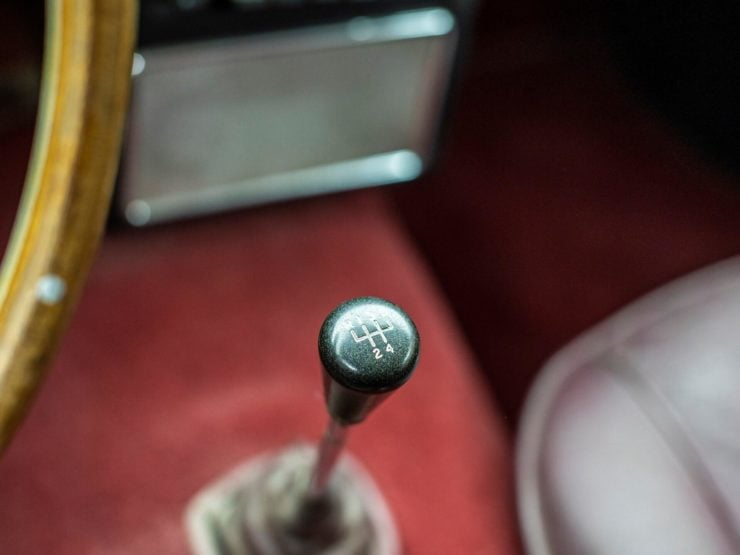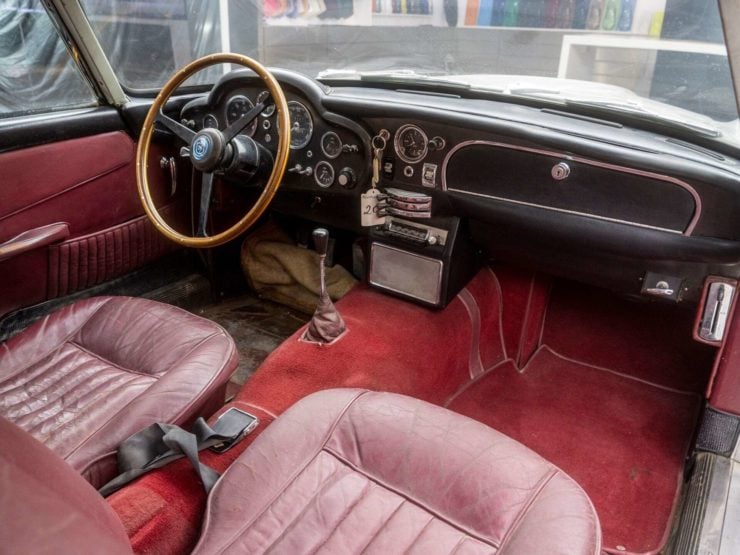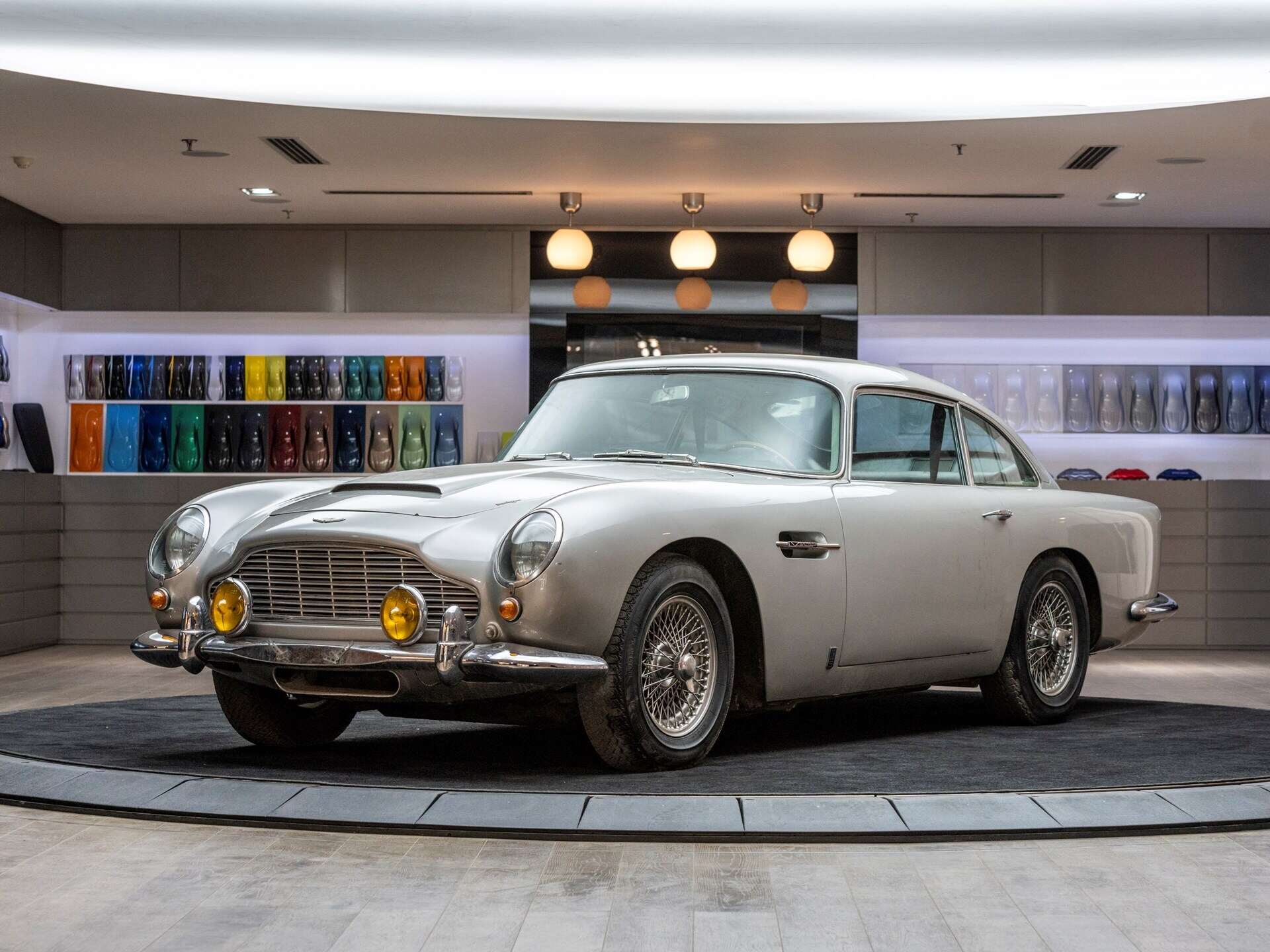A Classic Car with Movie Star Cachet
The Aston Martin DB5 has become the iconic Aston, the classic for the gentleman or lady who aspire to owning and driving what is arguably the most famous classic British sports car ever, rivaled only by Jaguar’s E-Type.
The key to the DB5’s fame and desirability came, not just because it was an outstanding example of the best of British sports car engineering, which it was, but also because it was anointed with the fame that comes from being a movie star: in fact it would become “The most famous car in the world.”
Fast Facts – Aston Martin DB5 Vantage
- The Aston Martin DB5 was the successor to the highly respected DB4.
- The DB5 featured no less than 170 improved features over its predecessor including an engine enlarged to 4.0 liters capacity and revised styling which included covers over the headlights.
- The DB5 was made in either standard version, or in the enhanced performance Vantage model.
- Body styles were the 2+2 coupe, a soft top convertible, and the shooting brake made specially for David Brown, the owner of Aston Martin.
- A Silver Birch Aston Martin DB5 2+2 coupe equipped with a range of spy gadgets featured in the 1964 James Bond movie “Goldfinger”, which catapulted the car to international stardom.
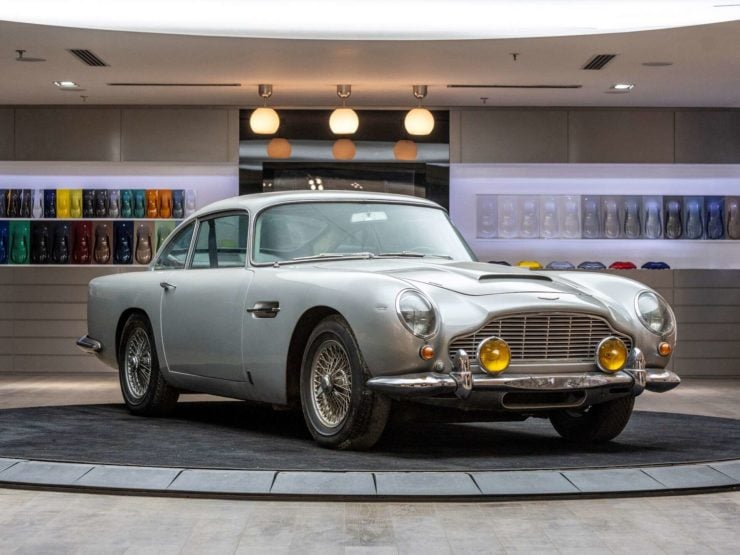
The DB5 is undoubtably the most famous Aston ever made, and this is one of just 17 high-performance Vantage models that were made in left-hand drive.
An Aston Martin DB5 painted in Silver Birch with red Connolly leather interior became a star of the 1964 James Bond movie “Goldfinger.”
Not only was it the car itself that was a thing of sophisticated high performance beauty, but it was the modifications done to the car in the film that made it the perfect 007 spy-mobile.
The DB5 of the movie was personalised for James Bond’s line of work. Modifications ranged from the bulletproof rear shield and oil slick device to the front mounted concealed machine guns, and the discreet little red button under the gearlever knob that controlled the passenger ejector seat with which Bond could eject an unwanted passenger.
Above Video: When he is shown this feature by “Q” Commander Bond says “Ejector seat – you’re joking.” to which “Q” responds “I never joke about my work 007.”
Thus it was that the “Goldfinger” James Bond Aston Martin DB5 acquired a whole unique personality, one that touches every Silver Birch DB5 in the world and gives it that extra cachet of desirability – even if it doesn’t have front mounted machine guns nor a passenger ejector seat like the “Goldfinger” car.
The Aston Martin DB5
The Aston Martin DB5 was originally created, not with James Bond movies in mind, but as an improved version of the brilliant DB4.
The DB4 used some of the engineering technology from the Aston Martin DB Mark III (which was the James Bond car in Ian Fleming’s original novel “Goldfinger”) but with a new method of body construction and a completely new look.
Instead of the tubular chassis of the DB Mark III the DB4 was given a platform chassis onto which a tubular frame was fixed to support the hand-shaped aluminum alloy bodywork. The alloy used was called “Birmabright” and it was used on the original Land Rovers, and the Jaguar XK120, as well as on Aston Martins.
This method of body construction, with the aluminium panels fixed to a skeletal steel frame was called “Superleggera,” and it was used for both the DB4 and DB5.
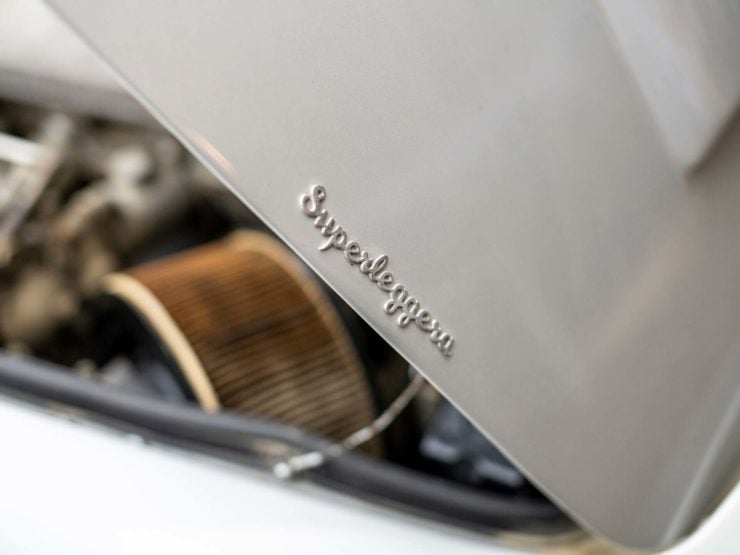
The bodywork for both the Aston Martin DB4 and DB5 was of “Superleggera” type – a steel skeletal framework with an aluminium Birmabright sheet metal body attached to it.
This new method of construction heralded new styling by Carrozzeria Touring of Milan. Gone was the 1950’s conservative style of the DB Mark III and it was replaced with a body style that gave the new Astons a distinctly British look with Italian characteristics. Despite being conservative the DB4 was at once a thing of exquisite beauty, and a thing of uncompromised performance.
It was this new body style of the DB4 that was improved on and carried over onto the new DB5. The DB5 was made in two main versions: the standard and the high performance “Vantage” model.
The DB5 featured about 170 improvements over its DB4 sibling. It retained the same design engine, the Tadek Marek inline DOHC straight-six all aluminum unit, but its displacement was increased from 3.7 litres to 4.0 litres (3,995 cc).
This engine in standard form breathed through three SU carburettors and produced 282 bhp with 280 lb/ft torque, which enabled a standing to 100 km/hr in about 8 seconds and a top speed around 145 mph, yet it accomplished this while still making the car easy to drive on the road.
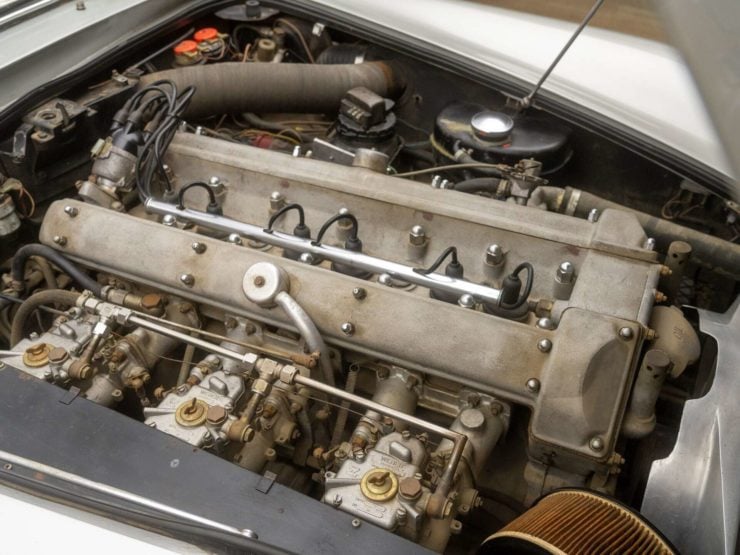
The all aluminium Tadek Marek inline DOHC 4.0 litre engine of the high performance DB5 Vantage was fitted with triple dual choke Weber carburetors and produced a healthy 325 bhp at a conservative 5,500 rpm with 288 lb/ft of torque at 4,500 rpm.
In high performance Vantage form this all aluminium engine was given a revised camshaft and breathed through three dual choke Weber carburetors and delivered power of 325 bhp at 5,500 rpm with torque of 288 lb/ft at 4,500 rpm.
This delivered a rather more “raw” sports driving experience which some drivers greatly appreciate, along with a higher top speed and a satisfying standing to 100 km/hr in the six second bracket.
When we say that the engine block and cylinder head were made of aluminium alloy that is a bit of an over-simplification.
The alloy was in fact a nickel-aluminium alloy called R.R. 50 Hiduminium: the name meaning “High Duty Aluminium“. This was one of a group of alloys developed by Rolls-Royce beginning in the 1930’s in the lead up to the Second World War.
The great advantage of the R.R. 50 alloy being its ability to retain its strength at high temperatures: making it a perfect choice for a high performance car engine.
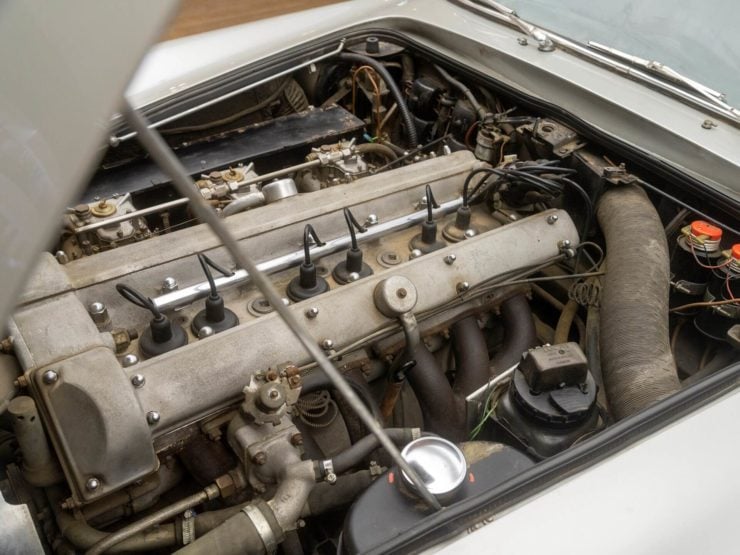
The DB5 engine block and head was made of Hiduminium R.R. 50 alloy for the best durability under high heat conditions.
The engine drove the rear wheels via a dry plate clutch and on the first DB5 models a four speed manual gearbox, optionally with a Laycock de Normaville electric overdrive: this being the common transmission style used on most British sports cars of this era.
If you check the video clip from the James Bond movie “Goldfinger” you will see that the movie car is fitted with this transmission.
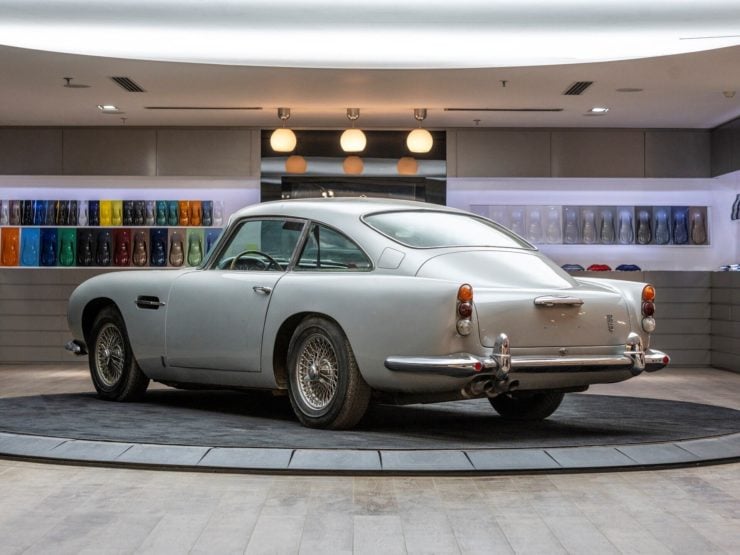
The elegant swept-back styling of the DB5 did a great job id integrating a trunk with ample space for luggage.
As production progressed it was decided to improve on the transmission by installing a five speed German ZF gearbox. This improved the driving experience and removed a layer of complexity for the driver.
For those who preferred it the DB5 was also offered with an optional Borg-Warner DG three speed automatic transmission, which was changed to the Borg-Warner Model 8 on late production cars.
The ZF five speed gearbox gave the DB5 long legs for comfortable and quiet motorway driving making the car a point to point long range touring car with few contemporaries to rival it.
This long range capability was enhanced by the car’s twin fuel tanks to ensure ample fuel capacity.
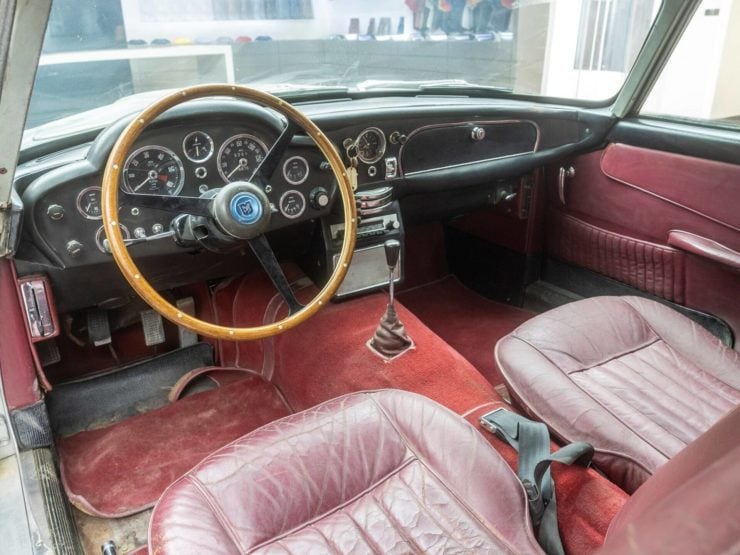
Having remained in storage for 12 years in Kuwait, this DB5 Vantage will require recommissioning prior to road use.
The suspension system for the DB5 is much the same as for the DB4. At the front were ball jointed upper and lower wishbones with anti-roll bar, coil springs and telescopic shock absorbers.
At the rear was a live axle – but not one using leaf springs, instead a far more sophisticated system using a Watt’s linkage and radius rods, with coil springs and telescopic shock absorbers.
For the steering system of a car of this quality rack and pinion was the “de rigueur” choice.
The brakes of the DB5 were servo assisted 11.5 inch (292 mm) Girling discs at the front and 10.79 inch (274 mm) discs at the rear. These were brakes that would bring the car to a swift stop from high speed over and over again – a fact that motor magazine reviewers of the time tested and affirmed.
The DB5 was created to provide an exhilarating yet civilized driving experience. The instrumentation and controls exemplify ergonomics created by engineers who understood how to place instruments so they were easy to monitor even when driving at speed or in complex situations, and controls that were tactile, and in the best possible place to enable instinctive use.

The DB5 featured an intelligently created interior based on Aston Martin’s experience in building racing cars.
In addition to being made in standard and high performance Vantage models the DB5 was also offered as a convertible, and the factory made just one shooting brake for Aston Martin’s owner David Brown (the source of the “DB” initials in the model name DB5).
David Brown being a keen hunter and dog enthusiast the shooting brake enabled him to enjoy his sporting activities in style.
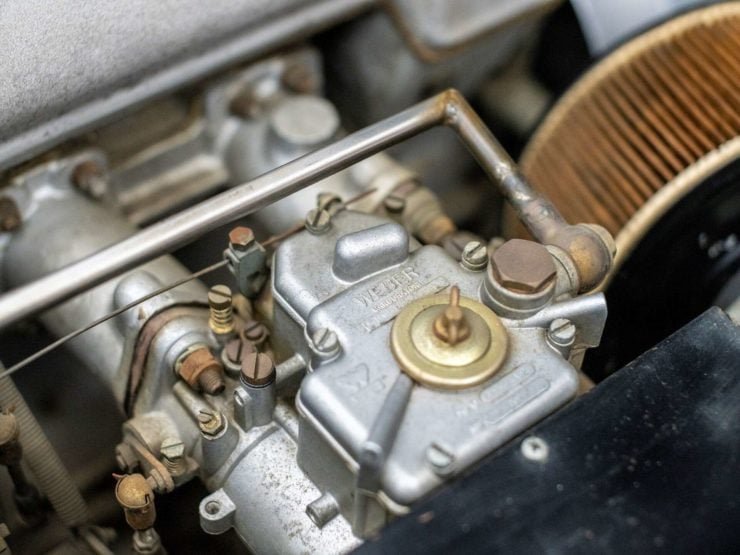
The twin choke Weber carburetors were the ultimate choice for performance cars of the 1960’s. They provide a boost to the car’s power and also help deliver a more spirited driving experience.
Rediscovered In Kuwait: An Aston Martin DB5 Vantage
There were only 1,059 Aston Martin DB5s made. When new a DB5 was roughly double the price of a Jaguar E-Type and so a lot more E-Types were made than Astons.
Of those 1,059 DB5s just 180 were made in left hand drive, and of the approximately 65 DB5 Vantage cars only around 17 were made in left hand drive. So a left hand drive DB5 Vantage that has survived to the present day is a rare bird indeed.
Adding to that scarcity remember that fifty seven years have passed since the 1965 left hand drive Silver Birch DB5 Vantage featured in our photographs rolled off Aston Martin’s factory floor at Newport Pagnell in the north of Buckinghamshire in Britain.
The vast majority of these cars have needed significant professional restoration work to bring them back to the “as new” condition most owners desire.
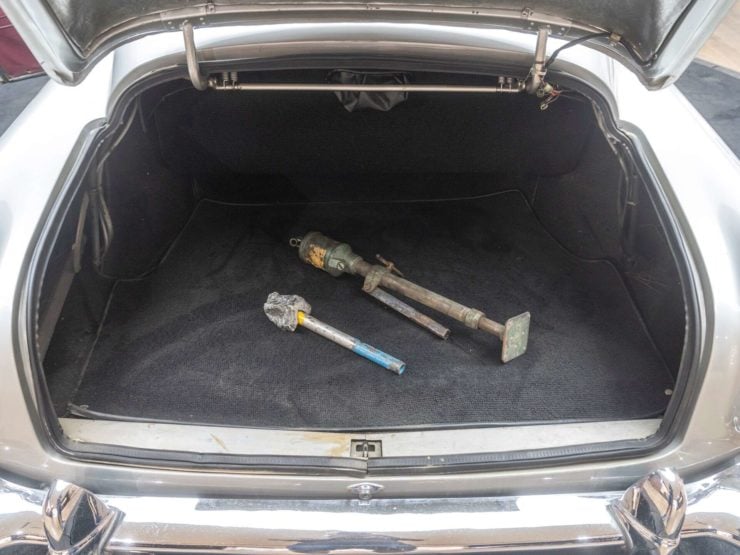
As a grand tourer, the DB5 had class leading trunk space which proved very useful when packing in your suitcases for a summer on the Continent.
So the car in our photographs is a valuable candidate for a professional recommissioning – being a left hand drive DB5 Vantage that will be coming up for sale by RM Sotheby’s at their St. Moritz auction, to be held at the Grand Hotel des Bains Kempinski St. Moritz, on 9th September 2022.
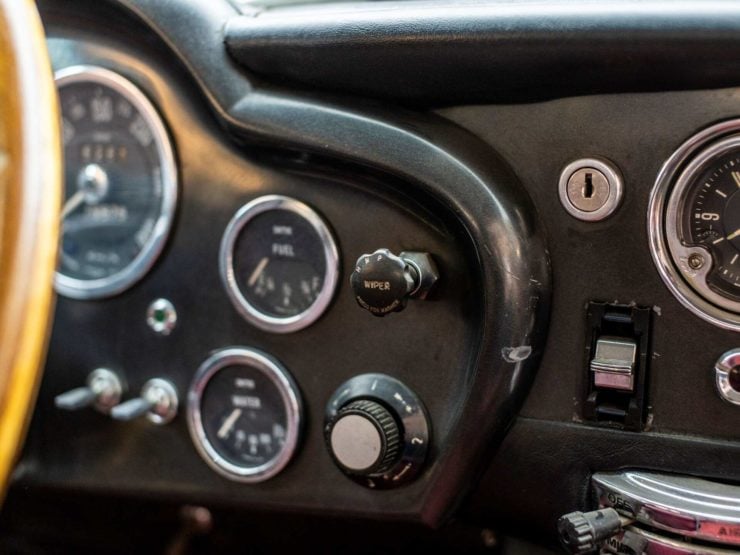
This car has an odometer reading of 76,575 km and has a known history, having had five owners since new, and its current owner had the car for twelve years.
This DB5 Vantage is complete and original with matching chassis and engine numbers. It comes with a data sheet and letter from the Aston Martin Heritage Trust, a certificate from the British Motor Heritage Trust, an instruction book, jack, and a spare wheel, so it is well documented.
The car was purchased by its current owner on 11 September 2010 and put into dry storage in Kuwait as a part of a large collection. The Contrôle Technique on the car states the odometer reading to have been 76,566 km the day prior to the sale.
This represents a rare opportunity to become the owner of a complete and numbers matching left hand drive Aston Martin DB5 Vantage documented in its original paint scheme of Silver Birch with red Connolly leather interior trim.
We have included a selection of photographs from RM Sotheby’s to illustrate the current condition of the car courtesy Ahmed Qadri-Pixelhaus Media, and you will find more photos detailing the car’s condition on the sale page.
The Aston Martin DB5 lays claim to being the most famous British sports car in the world. When sold it was twice the price of a Jaguar E-Type and it was hand built with hand-shaped aluminium body panels.
There can be no denying that this is a very rare example of one of the greatest Aston Martins made in the period.
If you are interested in this car and would like further information you can find the R.M. Sotheby’s information and sale page here.
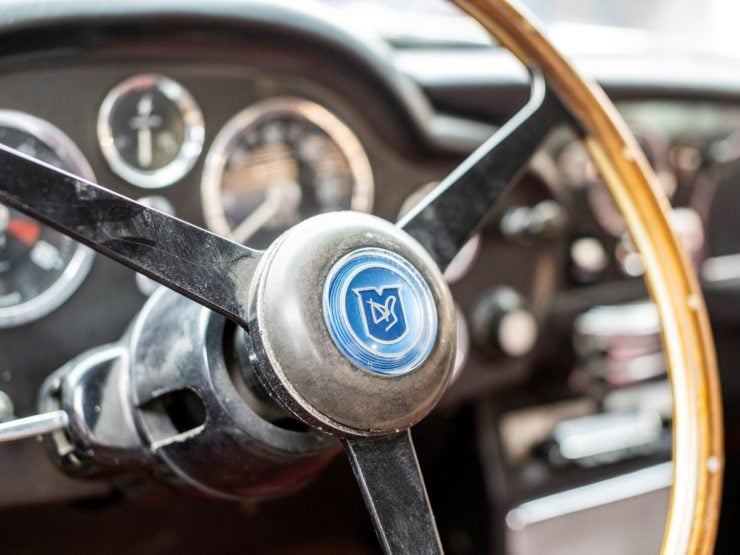
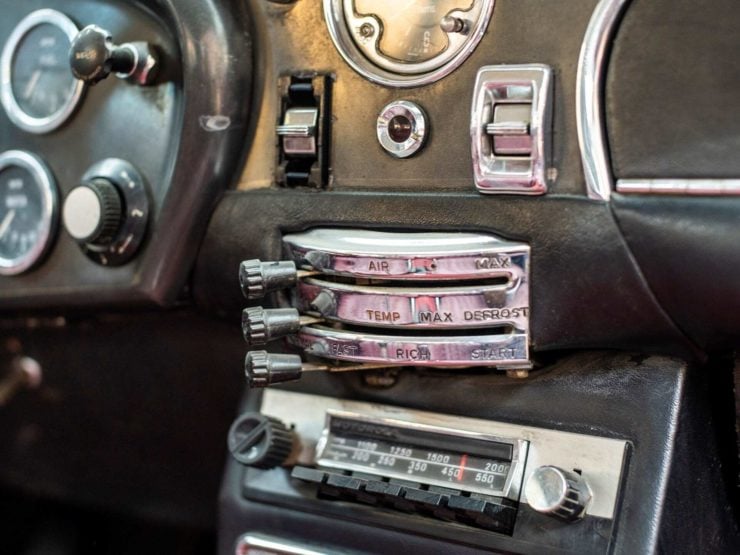
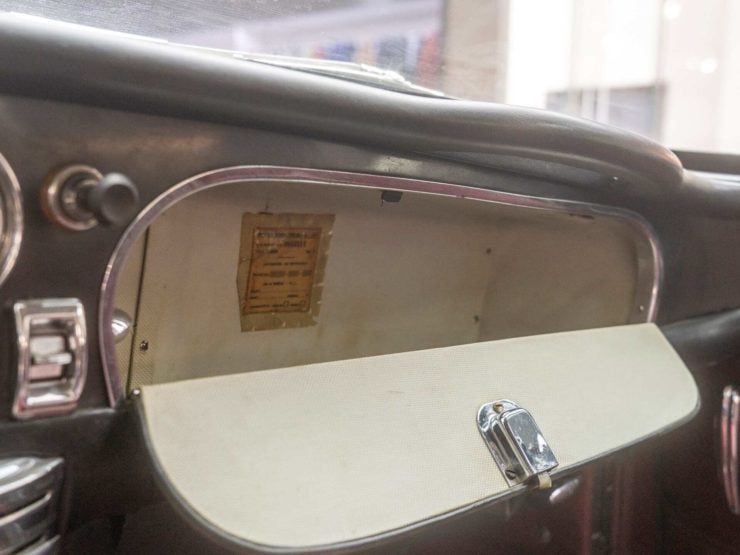
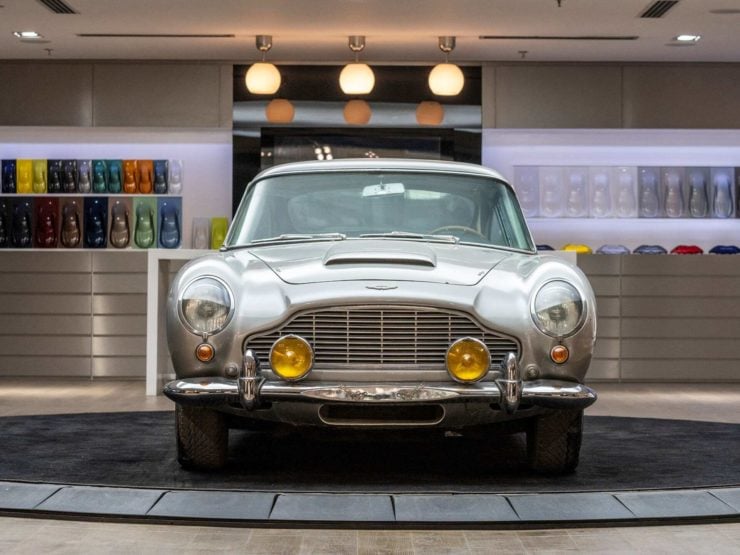
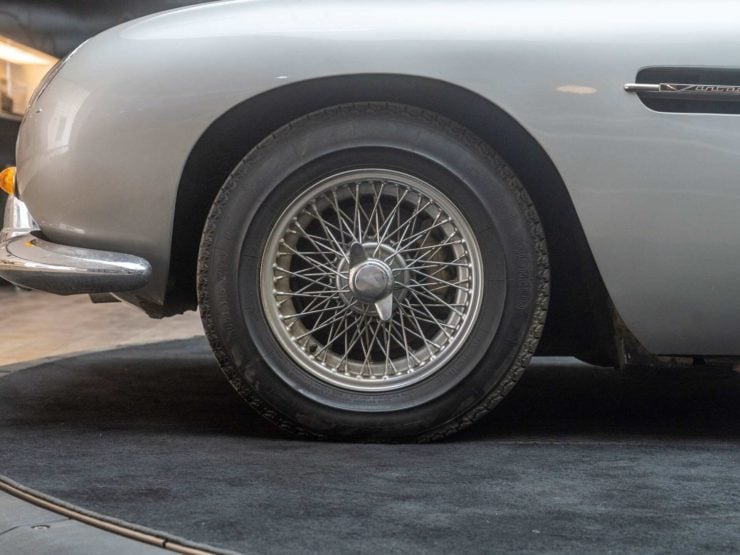
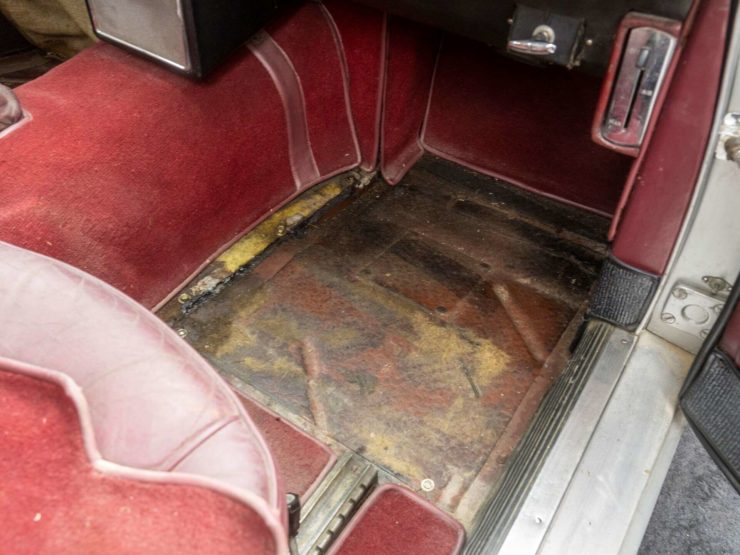
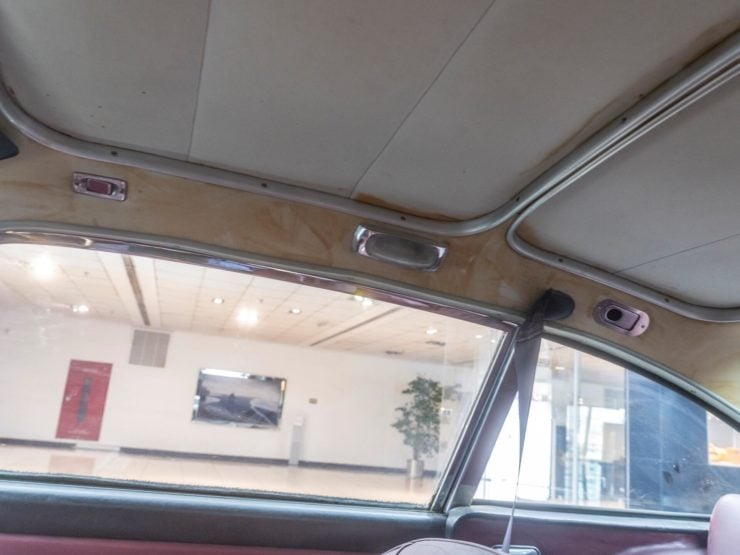
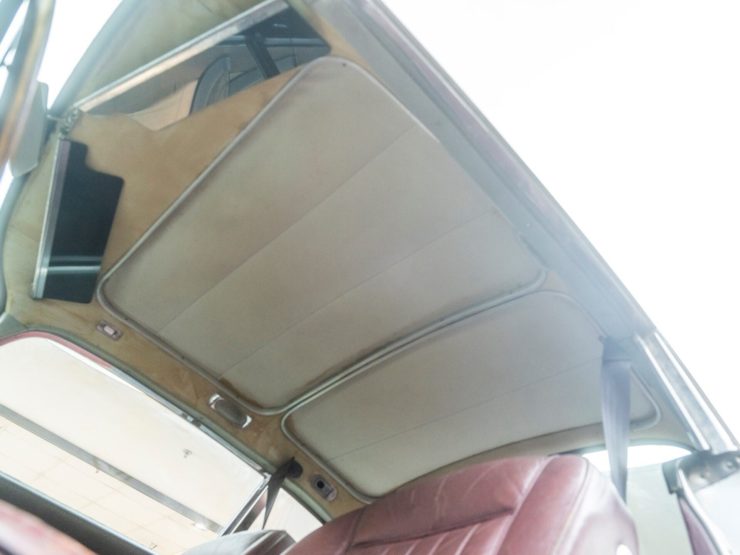
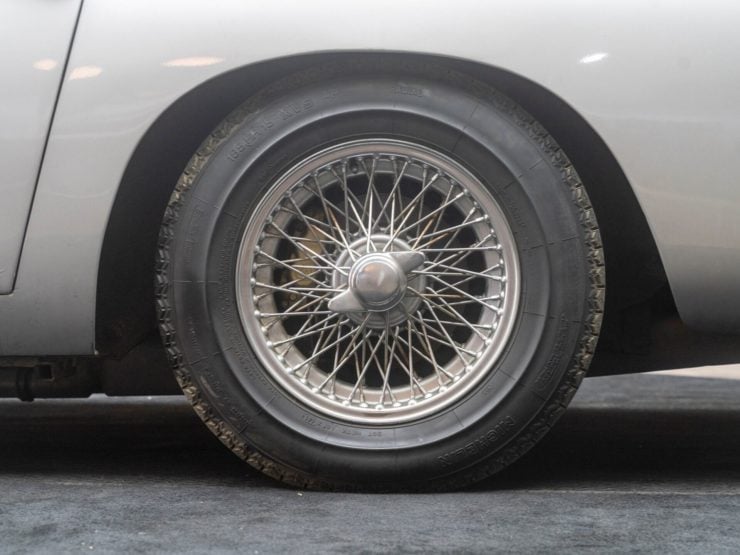
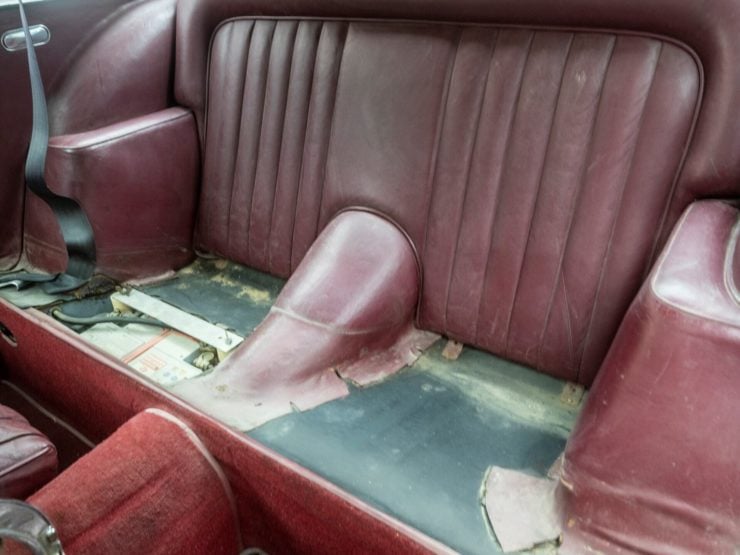
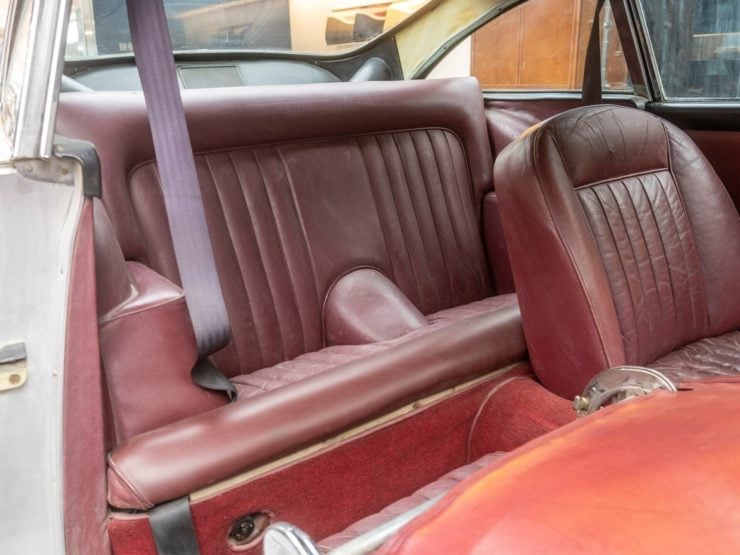
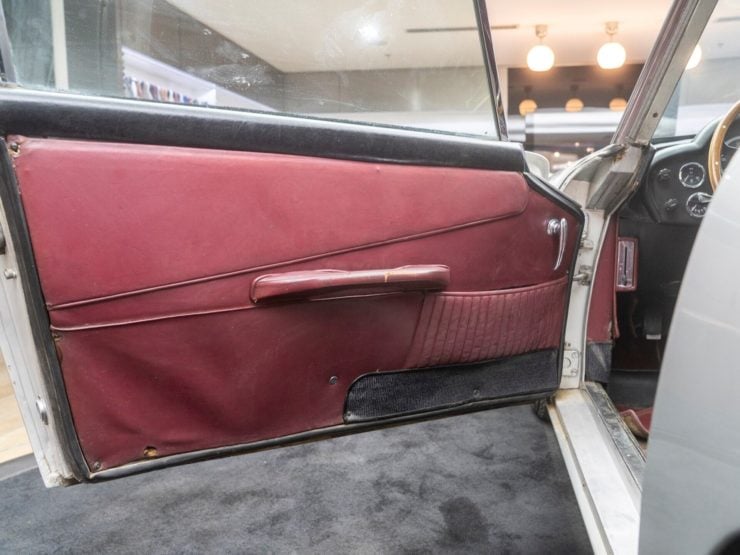
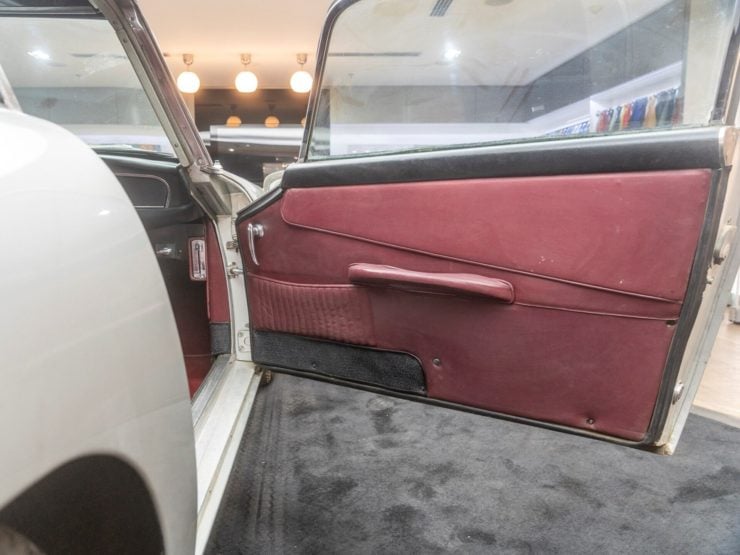
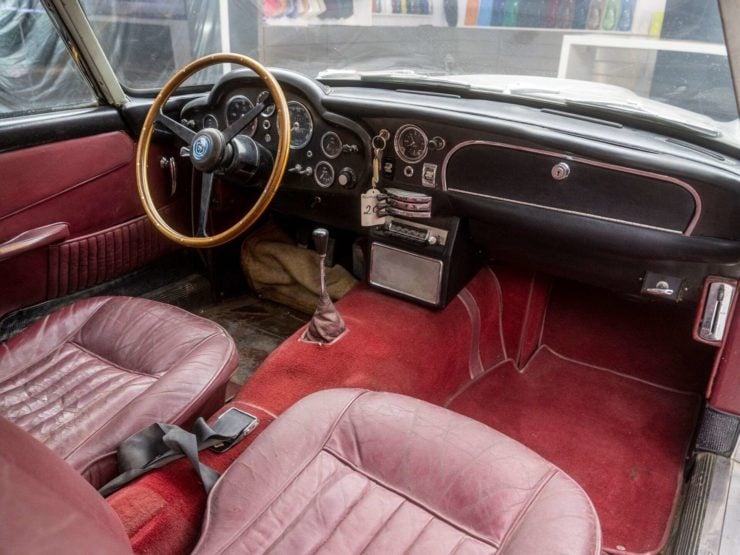
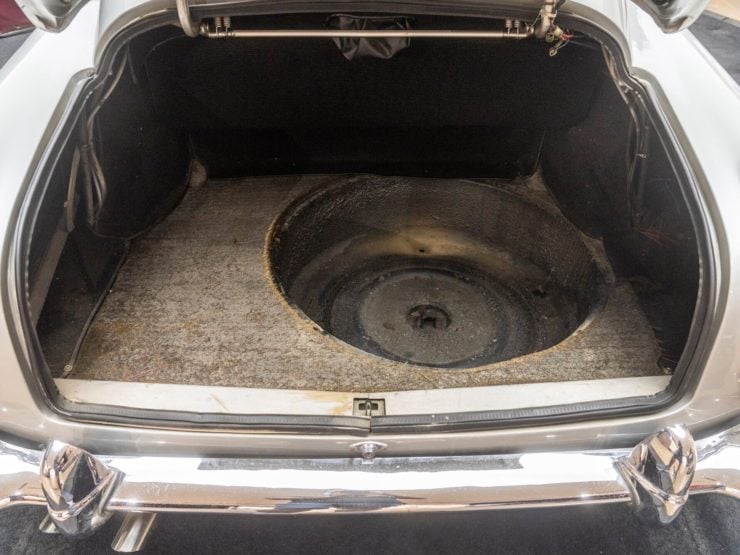
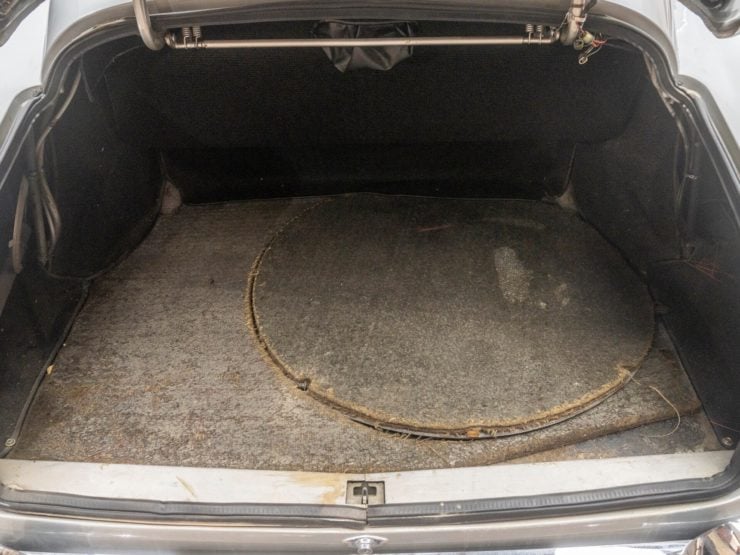
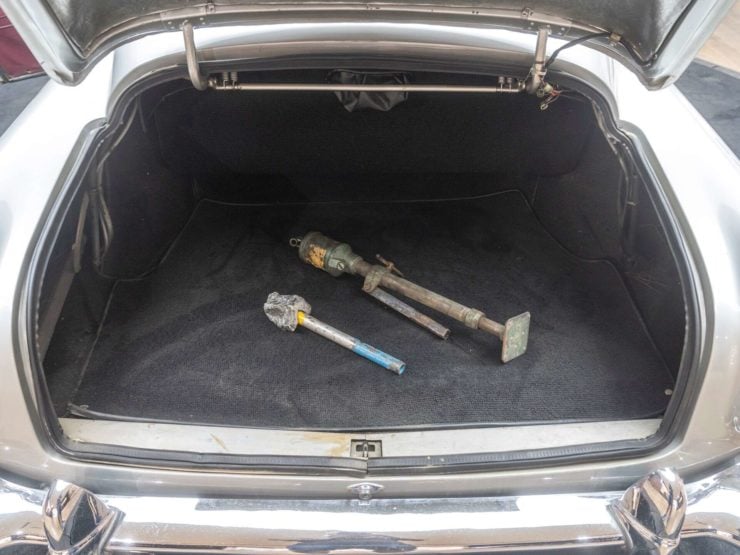
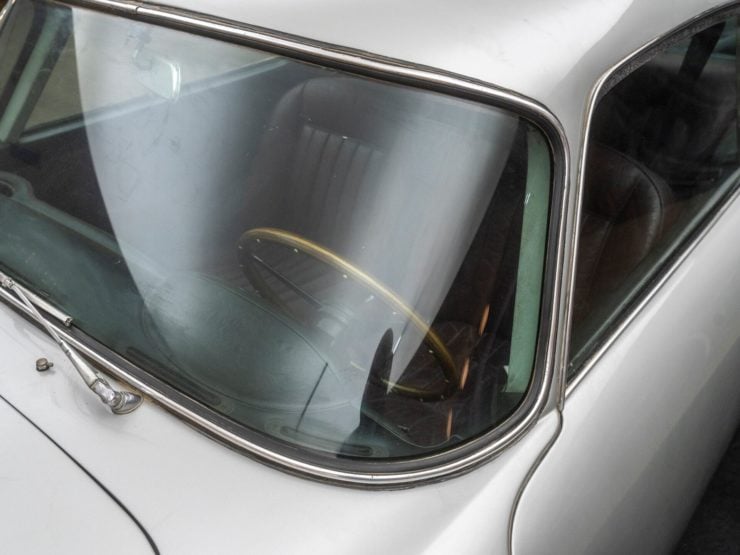
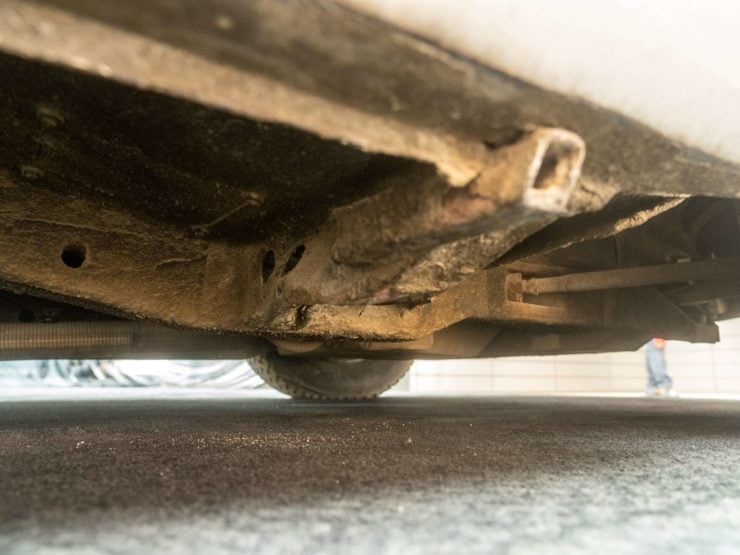
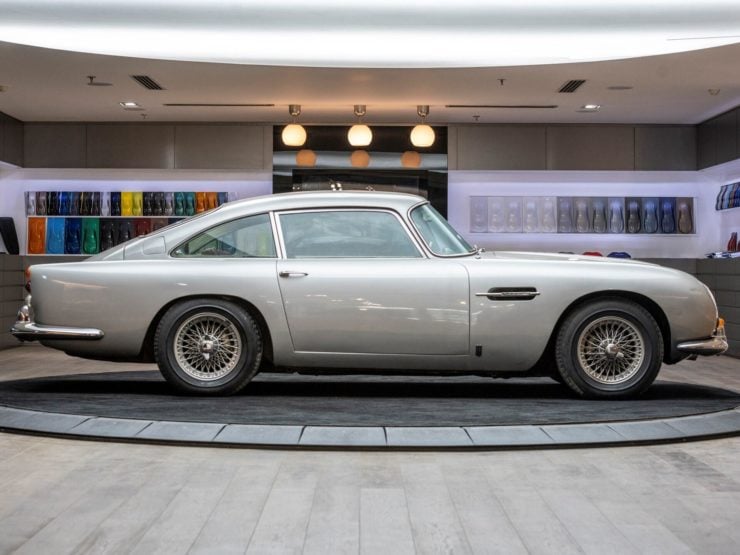
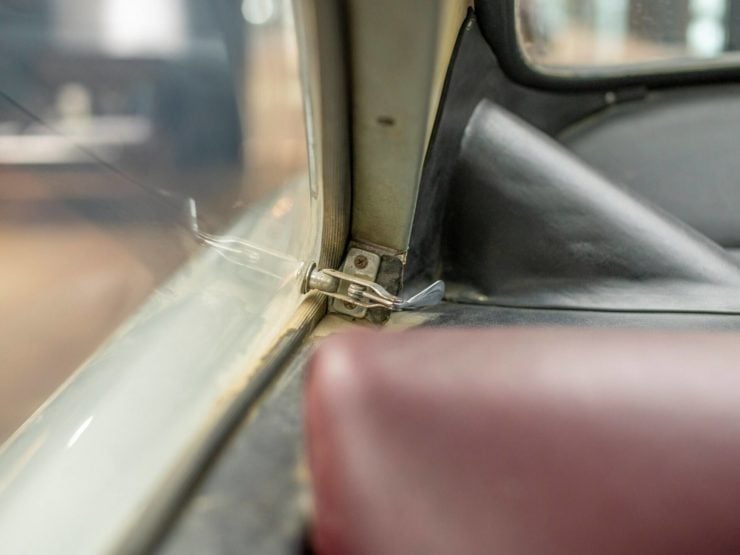
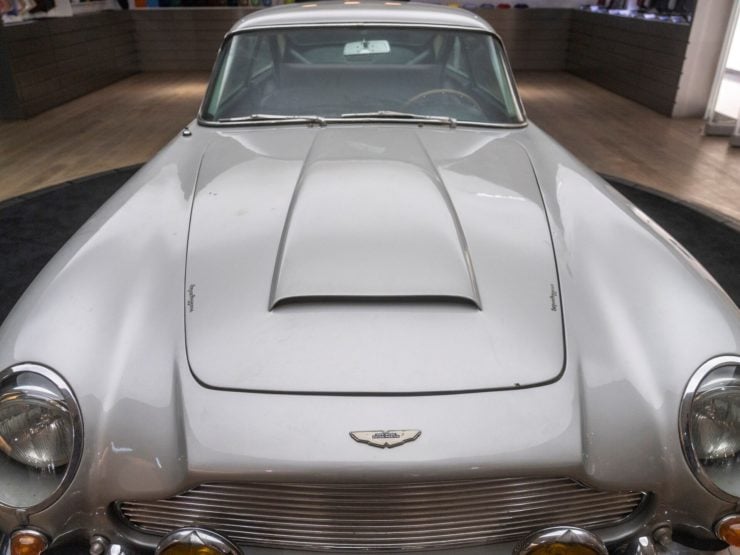
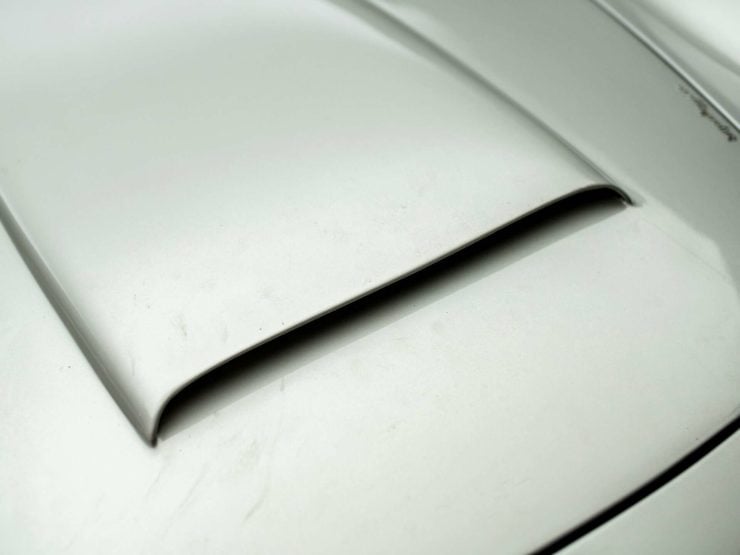
Images courtesy of RM Sotheby’s
The post Uncovered After 12 Years Storage In Kuwait: A Rare 1965 Aston Martin DB5 Vantage appeared first on Silodrome.
from Silodrome https://silodrome.com/aston-martin-db5-vantage/
via gqrds
